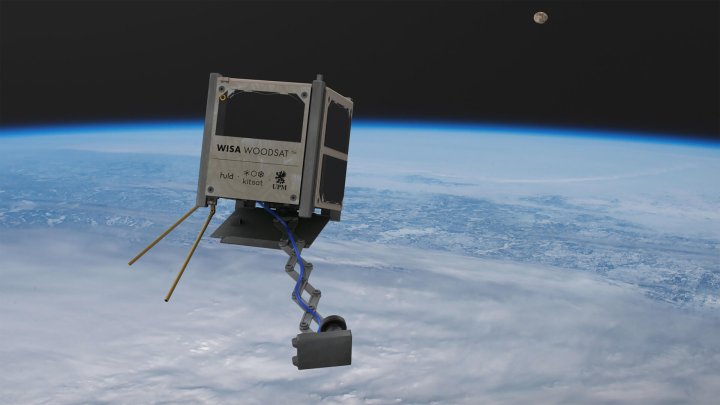
A Scandinavian company plans to launch the world’s first wooden satellite to bring attention to the use of renewable materials in space.
We’ve previously reported on plans from Japan for the world’s first wooden satellite, aimed for launch in 2023, but it now looks like Europe will snatch that achievement with plans to launch its wooden satellite before the end of the year.
The European design is being put forward by Finnish company Arctic Astronautics, whose founder, Jari Makinen, said he was inspired by his hobby of making model planes. His company flew a wooden satellite aboard a weather balloon in 2017 and decided to upgrade their plans to a fully orbital satellite to be launched by New Zealand company Rocket Lab.
The satellite, which measures roughly 10cm on each side, is constructed from simple materials and weighs just one kilogram. The team hopes that their design can help move space technology away from fossil-based materials and toward more renewable materials like wood.
“The base material for plywood is birch, and we’re using basically just the same as you’d find in a hardware store or to make furniture,” explained Woodsat chief engineer and Arctic Astronautics co-founder Samuli Nyman.
“The main difference is that ordinary plywood is too humid for space uses, so we place our wood in a thermal vacuum chamber to dry it out. Then we also perform atomic layer deposition, adding a very thin aluminum oxide layer — typically used to encapsulate electronics. This should minimize any unwanted vapors from the wood, known as ‘outgassing’ in the space field, while also protecting against the erosive effects of atomic oxygen. We’ll also be testing other varnishes and lacquers on some sections of the wood.”
The mini-satellite will carry sensors on board, including a pressure sensor and an LED with a photoresistor, which can be used to monitor the satellite’s condition. It will have a selfie stick as well, with a pair of onboard cameras that can take pictures of the satellite. The team hopes that the end result will be beautiful and inspiring as well as functional.
“In the end, Woodsat is simply a beautiful object in terms of traditional Nordic design and simplicity; it should be very interesting to see it in orbit,” said Makinen. “Our hope is it helps inspire people to take [an] increased interest in satellites and the space sector as something that already touches all our lives and is only going to get bigger in [the] future.”



